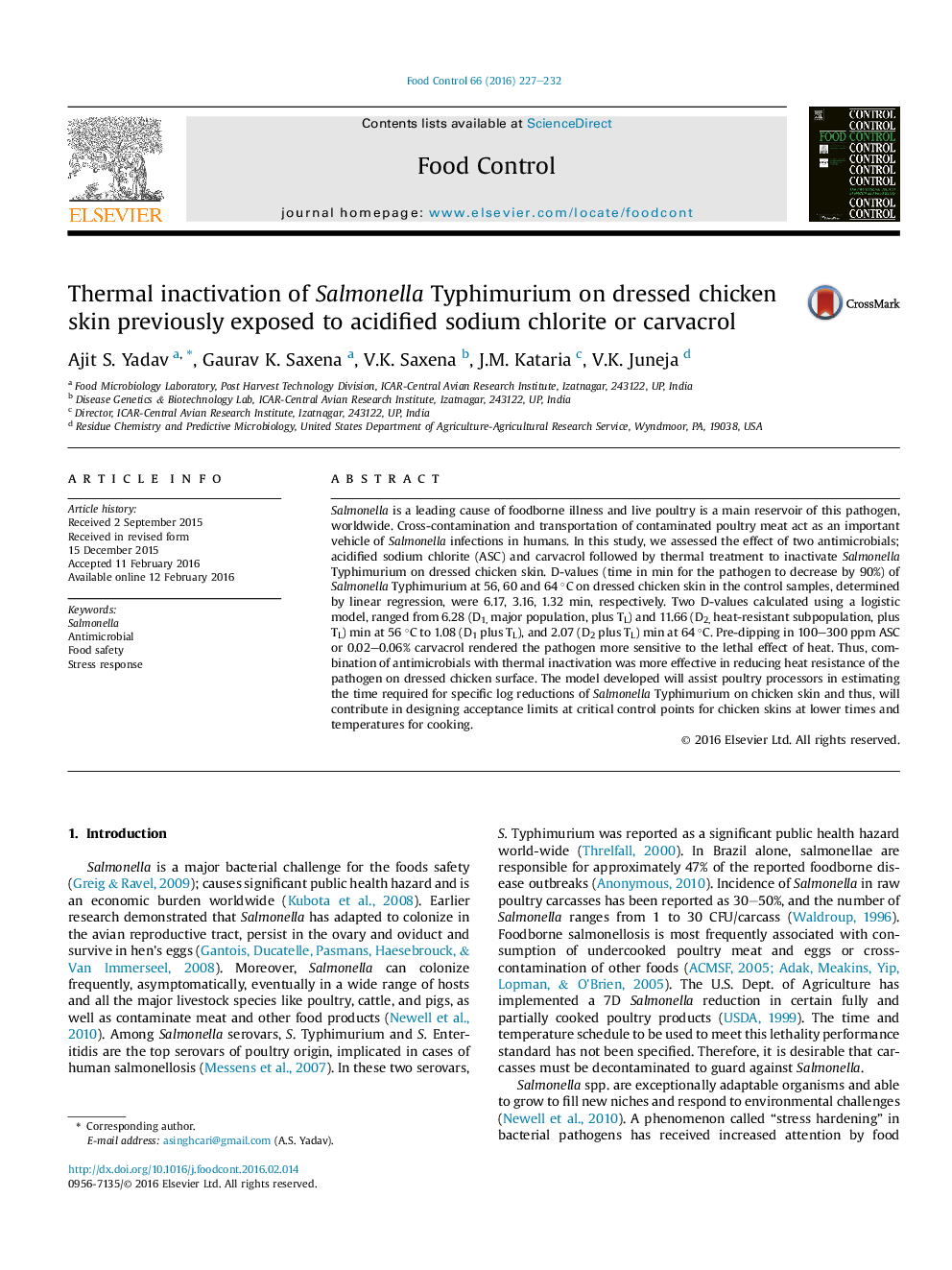| کد مقاله | کد نشریه | سال انتشار | مقاله انگلیسی | نسخه تمام متن |
|---|---|---|---|---|
| 4559195 | 1628396 | 2016 | 6 صفحه PDF | دانلود رایگان |

• First study on inactivation of heat stressed Salmonella Typhimurium using antimicrobials.
• Pre-dipping of chicken skin in ASC or carvacrol resulted in increased sensitivity of Salmonella Typhimurium to heat.
• Carvacrol provided more effective inactivation of Salmonella Typhimurium on chicken skin surface.
Salmonella is a leading cause of foodborne illness and live poultry is a main reservoir of this pathogen, worldwide. Cross-contamination and transportation of contaminated poultry meat act as an important vehicle of Salmonella infections in humans. In this study, we assessed the effect of two antimicrobials; acidified sodium chlorite (ASC) and carvacrol followed by thermal treatment to inactivate Salmonella Typhimurium on dressed chicken skin. D-values (time in min for the pathogen to decrease by 90%) of Salmonella Typhimurium at 56, 60 and 64 °C on dressed chicken skin in the control samples, determined by linear regression, were 6.17, 3.16, 1.32 min, respectively. Two D-values calculated using a logistic model, ranged from 6.28 (D1, major population, plus TL) and 11.66 (D2, heat-resistant subpopulation, plus TL) min at 56 °C to 1.08 (D1 plus TL), and 2.07 (D2 plus TL) min at 64 °C. Pre-dipping in 100–300 ppm ASC or 0.02–0.06% carvacrol rendered the pathogen more sensitive to the lethal effect of heat. Thus, combination of antimicrobials with thermal inactivation was more effective in reducing heat resistance of the pathogen on dressed chicken surface. The model developed will assist poultry processors in estimating the time required for specific log reductions of Salmonella Typhimurium on chicken skin and thus, will contribute in designing acceptance limits at critical control points for chicken skins at lower times and temperatures for cooking.
Journal: Food Control - Volume 66, August 2016, Pages 227–232